Linden Trees: Types, Leaves, Flowers, Bark – Identification (with Pictures)

Linden trees (botanical name Tilia) are sizeable deciduous shade trees with large heart-shaped broadleaves and clusters of yellowish-white flowers. European linden trees are also called lime trees, and North American lindens are called basswood trees. Linden tree identification is by their thick furrowed trunks, horizontal branches, dense leafy foliage, and pyramidal growth habit.
The main linden tree species in North America is the American linden basswood (Tilia americana). However, European varieties of lindens such as the common linden (Tilia x europaea), little-leaf linden (Tilia cordata), silver linden (Tilia tomentosa), and the weeping silver linden (Tilia tomentosa ‘Petiolaris’) also grow throughout the United States.
This article is a guide on how to identify common species of linden trees. Descriptions and pictures of linden tree leaves, bark, flowers, and seeds will help identify these large deciduous trees.
Linden Tree Facts
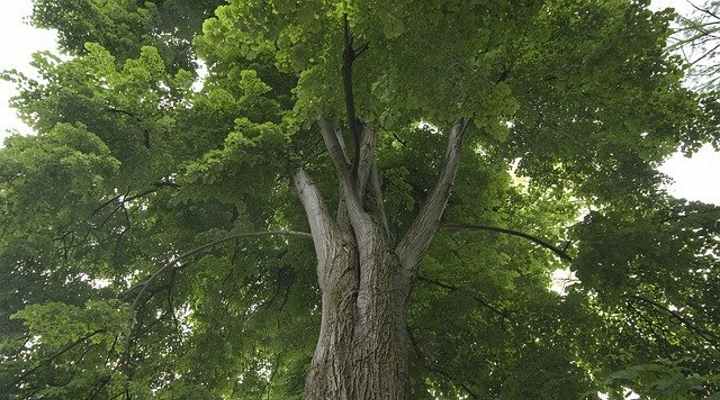
The flowering deciduous linden trees are typically large and suitable for landscaping spacious areas
There are around 30 species of linden trees and shrubs in the genus Tilia and the family Malvaceae. Typically, linden trees grow to between 65 and 130 ft. (20 – 40 m) tall and 50 ft. (15 m) wide. Suitable for large backyards, linden trees are excellent for shade due to their pyramidal, rounded crown and dense foliage.
All species of linden trees flower and are known for their fragrant yellowish flowers that bloom in summer. The fragrant linden tree flowers attract bees. The honey produced by bees that pollinate linden trees is of superior quality. Some beekeepers grow linden trees specifically for the delicious honey that the bees produce. This fact gives the linden tree another common name—bee tree or honeybee tree.
Linden trees are low-maintenance, easy-care landscaping trees. The sizeable deciduous linden or basswood tree thrives in full sun to partial shade and moist soil with excellent drainage.
Fragrant linden trees in the Tilia genus grow well as specimen trees. Some of the linden tree cultivars are also ideal for planting hedgerows to create a sweet-smelling flowering privacy screen.
One thing to consider before planting a linden tree is that linden trees are somewhat messy. Apart from having to clear a lot of bright yellow leaves in the fall, lindens secrete a sticky sap. This secretion sticks to cars, pathways, your lawn, and even your clothes.
Linden Tree Leaves
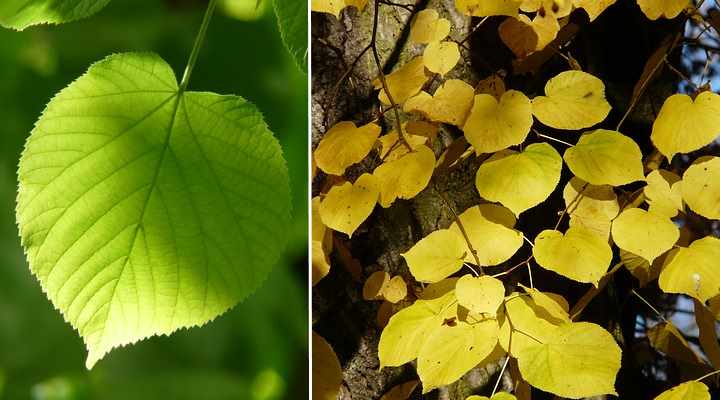
A close up picture of linden tree leaf (left) and autumn foliage (right)
Linden tree leaves are broadly ovate, dark green in a heart shape or an ovate triangular shape. The leaves of linden trees have coarsely serrated margins and are arranged alternately. Classed as simple leaves, linden leaves grow between 4” and 8” (10 – 20 cm) long and 2” to 5” (5 – 12 cm) wide.
Young linden leaves have a fuzzy underside that becomes smooth as the heart-shaped leaves grow larger. In some respects, linden leaves look like aspen tree leaves, only much larger.
In the fall, linden tree leaves turn a spectacular bright yellow color. The dark green linden leaves turn golden yellow, making linden trees easy to spot in fall landscapes.
Linden Tree Flower
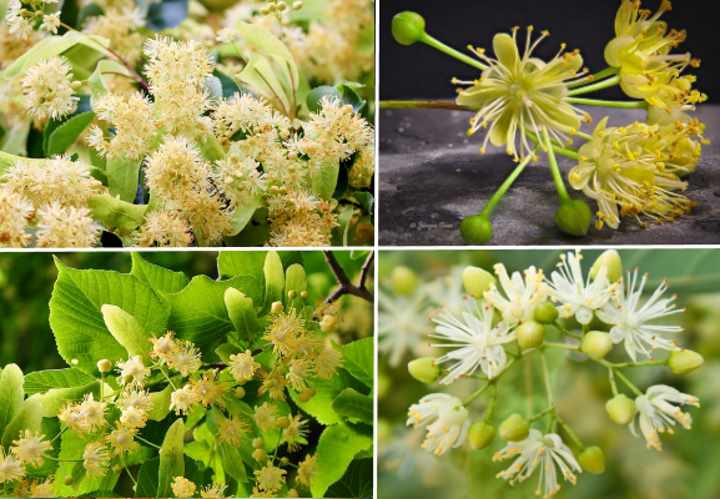
Linden trees have clusters of fragrant creamy yellow fuzzy flowers
Linden tree flowers are creamy yellow and look like drooping clusters of showy, fuzzy blooms called cymes. Typically, there are five to ten flowers in each cluster. The highly fragrant linden flowers bloom in late spring and persist throughout the summer. The flowers on linden trees dangle from long, strap-shaped bracts.
Linden Tree Bark
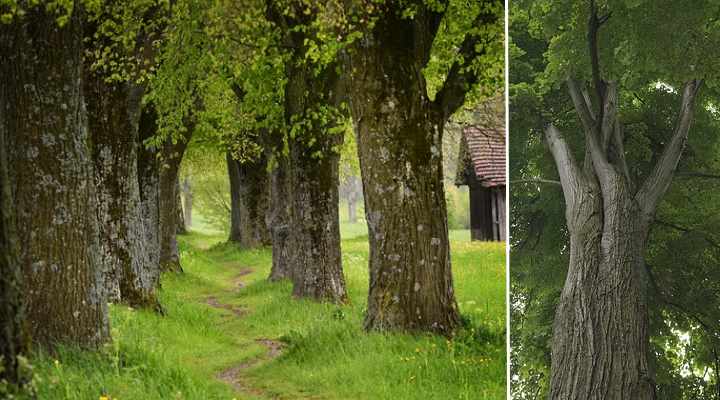
Linden tree bark is gray and furrowed when the tree matures
The linden tree is identified in landscapes by its gray ridged and furrowed scaly bark. The light gray bark is relatively smooth and shiny on immature trees. As the linden tree grows taller and matures, the bark develops ridges and furrows. The bark on the linden tree branches is gray and smooth, giving the tree some visual winter appeal.
Linden tree bark has a strong fibrous inner bark that has many uses. The bark is strong enough to make ropes or mats and was even used to make clothing.
Linden Tree Seeds
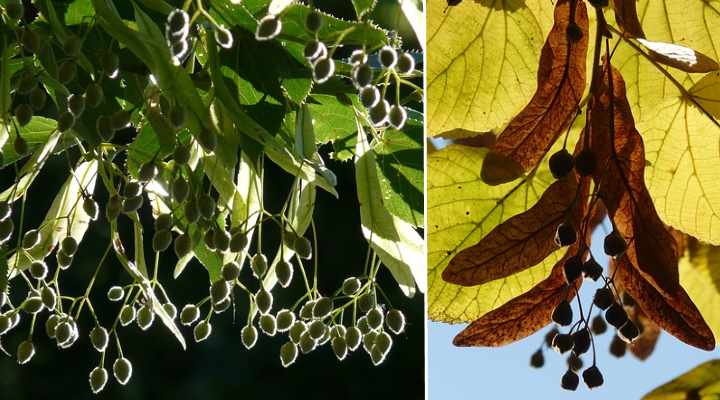
Linden immature green seeds (left) and mature creamy-brown seeds (right)
Linden tree seeds are small round nut-like fruits that have a hard shell. The tiny oval linden seeds grow in clusters on the end of a peduncle. Each hard, cream-colored seed measures up to 0.2” (0.5 cm) in diameter, about a pea’s size and shape.
Linden Tree Identification
Linden trees can be identified by their characteristic ridged light gray bark, huge heart-shaped, dark green leaves, and showy clusters of yellowish flowers. Linden trees also have an identifiable conical, oval crown with densely growing foliage. Linden tree identification is also by the unique small flower clusters that hang under leaf-like bracts.
Types of Linden Trees
Let’s look in more detail at the most common linden trees for growing in large residential landscapes and backyards.
American Linden – Basswood (Tilia americana)
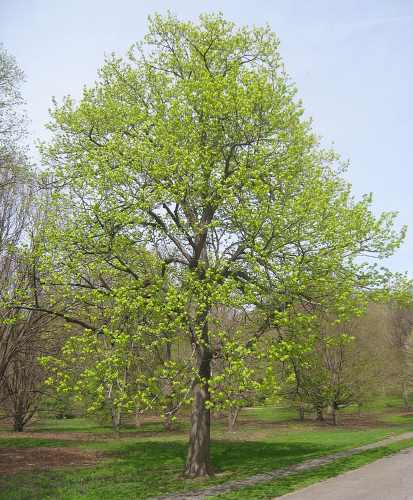
American linden tree (Tilia americana) – basswood
Also called the American basswood, the American linden tree (Tilia americana) is native to North America. The large American linden tree is identified by large ovate or heart-shaped leaves, gray fissured bark, and an ovate-rounded crown. As an imposing native tree, the American linden grows between 50 and 80 ft. (15 – 25 m) tall and up to 50 ft. (15 m) wide.
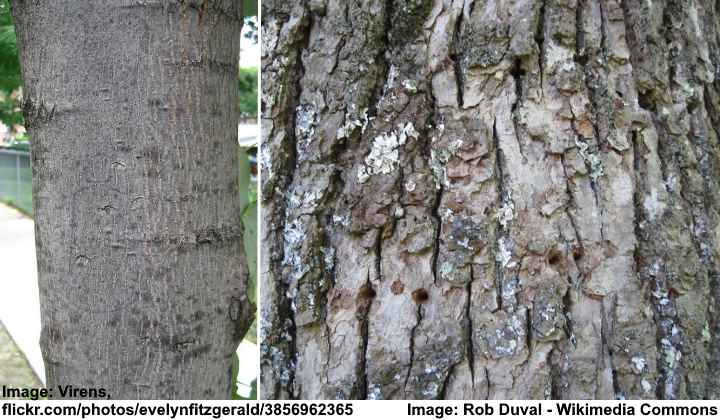
American linden tree bark of young tree (left) and bark of old tree (right)
The American linden basswood tree thrives in USDA zones 2 – 8. In a garden landscape, the tree grows best in full sun or partial shade. It is best to plant the American linden tree in fertile, well-draining loamy soil that stays relatively moist.
American linden trees can be messy trees in garden landscapes. Although the showy linden flowers are pleasantly fragrant, the trees secrete a sticky substance. Additionally, the dense foliage means that there is plenty of fall clear-up when the yellow leaves fall.
An advantage of American basswood trees is that they attract honeybees. The summer pollinators are drawn to the fuzzy-looking flower clusters and sweet fragrance.
Linden tree leaves: American linden tree leaves are broadly ovate and heart-shaped. The large, serrated dark-green leaves are 6” (15 cm) long and up to 6” (15 cm) wide. You will also notice that the linden leaves have a silvery underside that makes the tree’s foliage shimmer in the wind. The tree’s fall color is yellow.
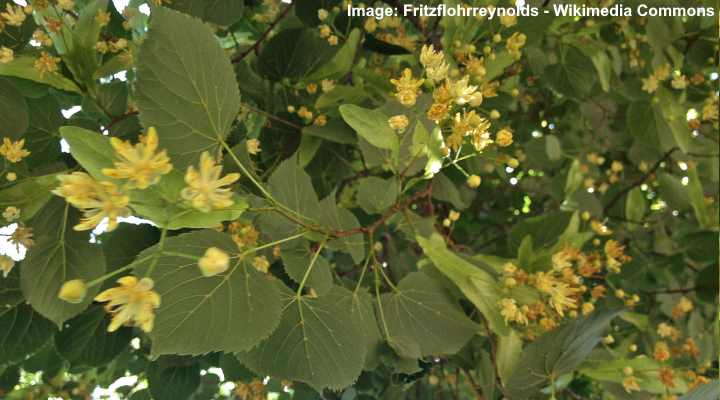
American linden leaves and flowers
Linden tree flowers: American linden tree flowers are a light yellow or creamy-tan color. The showy flowers grow in pendulous clusters that dangle under a leaf-like bract. The fragrant linden flowers have five petals, and numerous stamens make the flowers look fuzzy. Individual flowers measure up to 1” (2.5 cm).
Redmond Linden (Tilia americana ‘Redmond’)
The ‘Redmond’ linden tree is a fast-growing American basswood tree cultivar. The ‘Redmond’ linden has broad heart-shaped leaves, pendulous fragrant pale-yellow flower clusters, and gray furrowed bark. The American linden ‘Redmond’ is suitable for growing in large gardens as a shade tree.
Carolina Basswood (Tilia americana var. caroliniana)
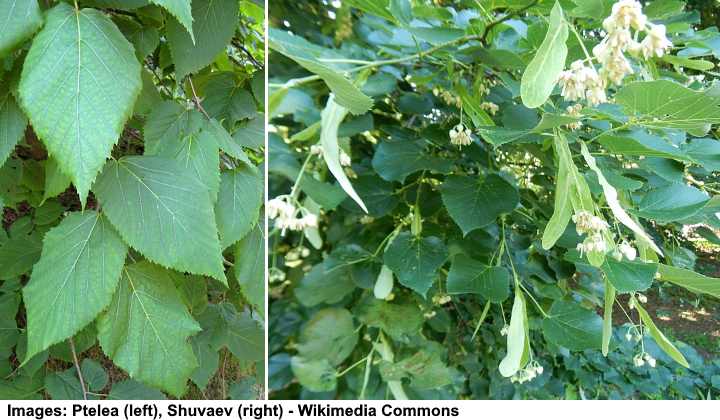
Leaves of Carolina basswood subsp. occidentalis (left) and flowers of Carolina basswood subsp. heterophylla (right)
The Carolina basswood is a deciduous medium to large tree with serrated ovate leaves, yellowish flowers, and rough gray bark. The American linden tree cultivar grows between 70 and 80 ft. (21 – 24 m) tall in USDA zones. You can identify the Carolina linden tree by its vast leaves up to 7” (21 cm) long and 5.5” (14 cm) wide.
European Linden (Tilia × europaea)
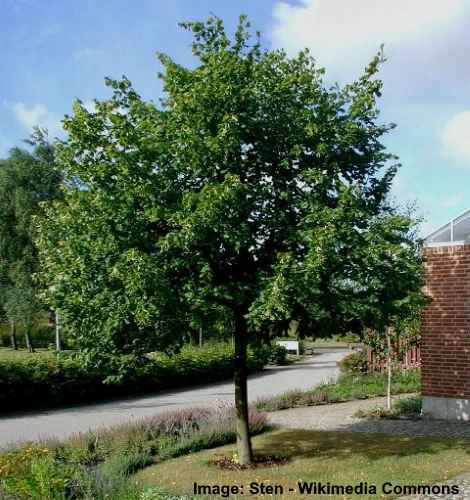
European linden young tree (Tilia × europaea)
The European linden tree, or common linden, has ovate leaves with serrated edges, clusters of scented creamy-white flowers, and a rounded pyramidal crown. European linden has identifiable showy flower clusters that bloom in late spring and summer. European linden trees have smooth gray bark that develops into dark gray, grooved bark.
The European linden tree thrives in USDA zone 3 – 7. It is a tall, attractive landscape tree that grows best in well-drained, moist soil and full sun. The mature height of the European linden is between 50 and 70 ft. (15 – 21 m) tall and 30 to 50 ft. (9 to 15 m) wide.
The botanical name of the European linden—Tilia x europaea—shows it’s a hybrid tree. This tree species is a cross between the Tilia cordata (little leaf linden) and Tilia platyphyllos (large-leaf linden).
Compared to the American linden, the European lime tree (Tilia x europaea) is identified by its smaller leaves and more rounded crown. The advantage of the European linden over the American linden is that it performs better in urban environments.
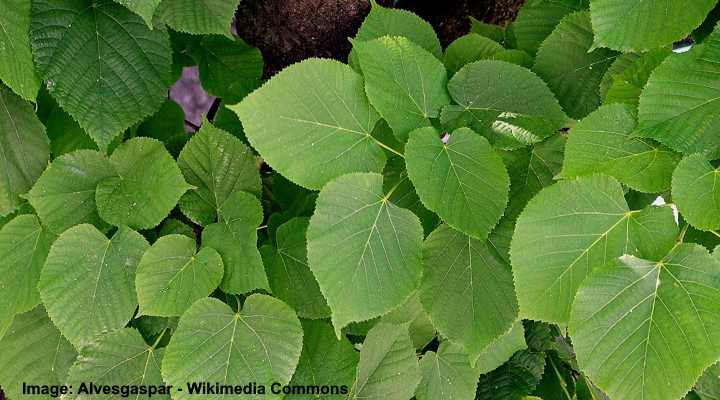
European linden leaves
Linden tree leaves: The European linden tree leaves are broadly ovate and dark green. Smaller than native lindens, the tooth-edged, pointed leaves grow up to 4” (10 cm) long. In the fall, the attractive dense foliage turns warm shades of yellow.

European linden flowers
Linden tree flowers: The European linden tree flowers are drooping cymes that give off an intense fragrance. The creamy-white flowers bloom during spring and summer.
Little-Leaf Linden Tree (Tilia cordata)
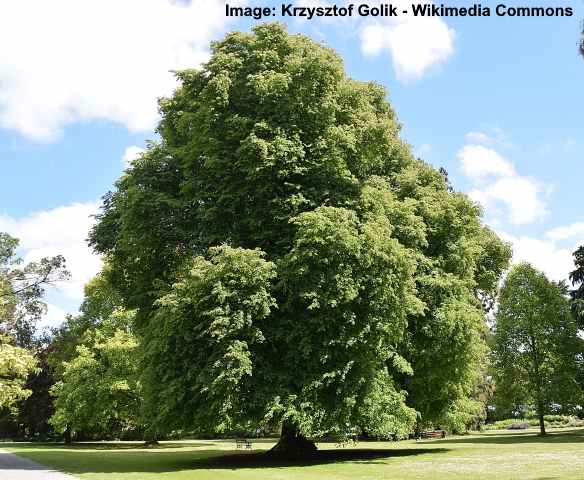
Little-leaf linden tree (Tilia cordata)
Little leaf linden trees grow at a medium rate and mature at 60 ft. (18 m) tall and 40 ft. (12 m) wide. The dense pyramidal canopy is made up of densely growing heart-shaped leaves that are 3” (7.5 cm) long. When the linden tree is in bloom during summer, the showy flowers fill backyards with a beautiful fragrance.
The little leaf linden thrives in USDA zones 3 – 8. The small leaf lime tree is a better shade tree for backyards and garden landscapes than the American linden because of its compact growth. Compared to American lindens, the little leaf linden is more heat tolerant and performs better in compacted soil.
A characteristic feature of the little leaf linden is that it sends up suckers around the trunk. With the proper pruning, you can also grow the little leaf linden as a flowering hedge or a specimen lawn tree.
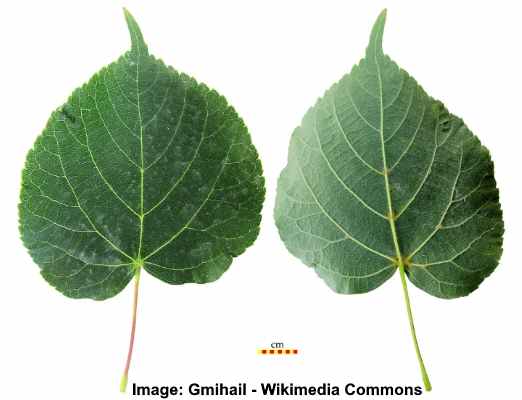
Little-leaf linden leaves: upper-side (left) and underside (right)
Linden tree leaves: The little leaf linden tree has glossy green heart-shaped leaves with slightly serrated edges. Also called the small-leaved lime tree, the small linden leaves turn golden yellow in the fall, creating a bright landscaping tree.
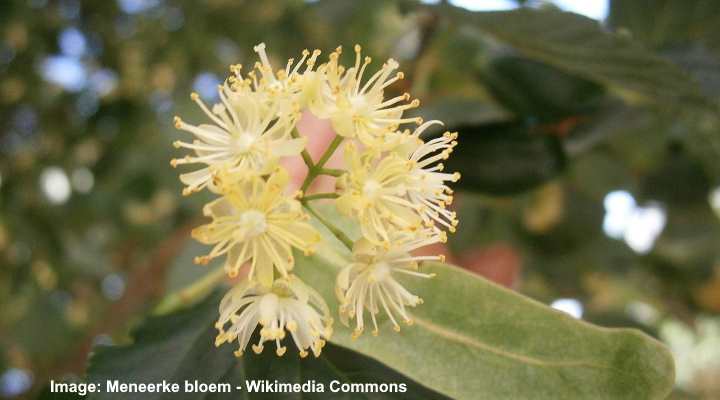
Little-leaf linden flowers
Linden tree flowers: The little leaf linden is identified by fragrant, creamy white to yellow flowers. The fuzzy-looking scented flowers grow under interesting leaf-like bracts.
Greenspire Linden Tree (Tilia cordata ‘Greenspire’)
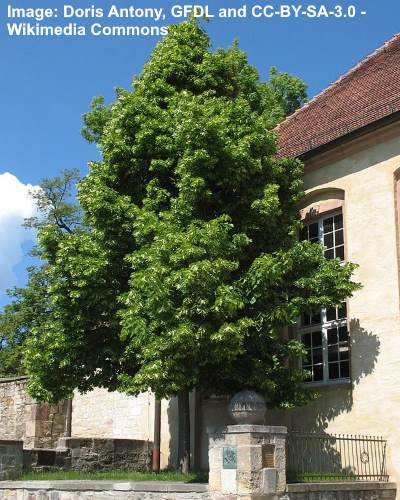
Greenspire linden tree (Tilia cordata ‘Greenspire’)
The Greenspire linden tree is a superb medium-growing shade tree with a pyramidal crown, dark green heart-shaped leaves, and yellow summer-blooming flowers. The Greenspire linden is also a low-maintenance, drought-tolerant landscape tree that thrives in urban environments.
Greenspire linden trees are ideal backyard shade trees in USDA zones 3 – 7. The majestic tree grows best in full sun, where it eventually grows to between 50 and 70 ft. (15 – 21 m) tall.
All species of linden trees bloom with clusters of small, showy flowers. The Greenspire linden is no exception. The Greenspire linden flowers add visual appeal in summer, and their strong fragrance and nectar attract pollinators.
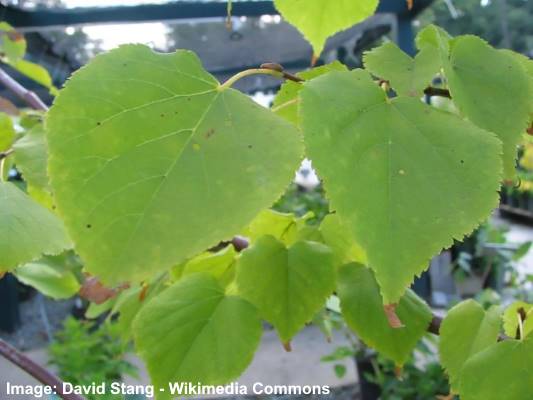
Greenspire linden leaves
Greenspire linden leaves: Also called the Greenspire little leaf linden, this tree has dark green, heart-shaped leaves with toothed margins and a pointed tip. The tree’s fall color is bright yellow.
Large-Leaved Lime Tree (Tilia platyphyllos)
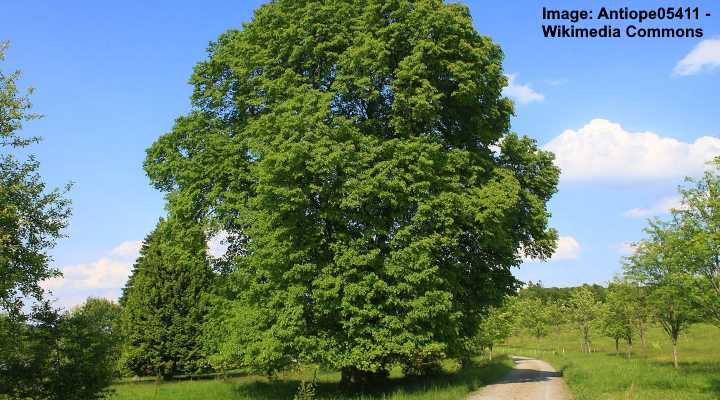
Large-leaved linden or large-leaved lime tree (Tilia platyphyllos)
The large-leaved linden or large-leaved lime is a large deciduous tree with round-ovate leaves, creamy-yellow showy flower clusters, and a broad, pyramidal crown. As a beautiful shade tree, the large-leaved lime (Tilia platyphyllos) grows up to 80 ft. (24 m) tall and 50 ft. (15 m) wide. As with all flowering linden trees, the large-leaved linden attracts bees in the summer.
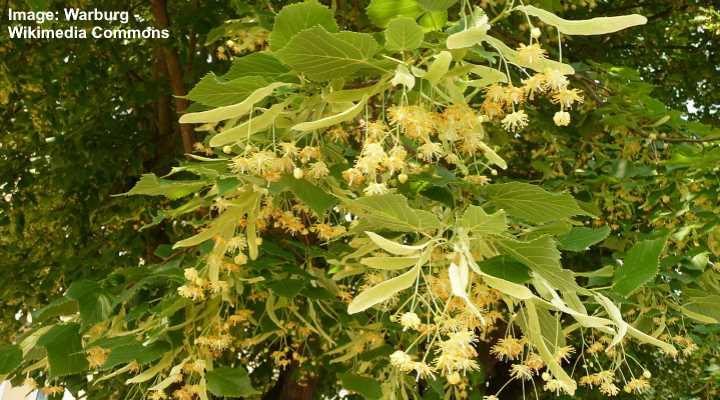
Large-leaved lime tree flowers
The hardy large-leaved lime tree thrives in USDA zones 2 – 6. The large, deciduous spreading tree grows best in moist, well-drained soil. This tree specimen is an ideal landscaping lawn, shade, or street tree. You can also train the large-leaved linden to grow as a tall privacy hedge.

Large-leaved lime tree leaves: upper-side (left) and underside (right)
Linden tree leaves: As its common name suggests, the large-leaved linden is identified by its enormous leaves. The green, heart-shaped leaves grow between 2.5” and 3.5” (6 – 9 cm), but sometimes up to 6” (15 cm). The dark green linden leaves turn pale yellow in the fall.
Silver Linden (Tilia tomentosa)
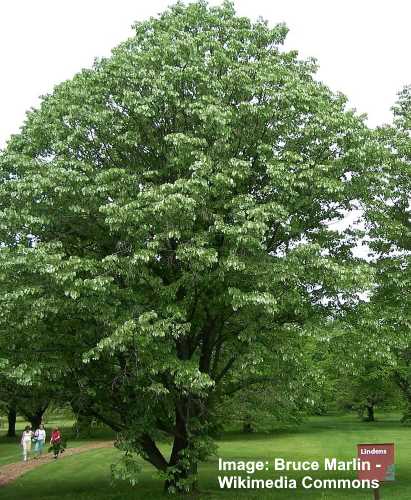
Silver linden tree (Tilia tomentosa)
The silver linden gets its name from the silvery underside on the glossy green rounded leaves. As an attractive medium-sized landscape tree, the silver linden grows between 50 and 70 ft. (15 – 21 m) tall and up to 50 ft. (15 m) wide. The tree’s spreading habit creates a broadly pyramidal crown.
You can identify the silver linden in landscapes due to its two-toned green and silver leaves. In breezes, the foliage takes on a shimmering effect as the silver-green blades flutter in the wind. You can also identify silver linden due to its yellowish-orange flowers that grow as drooping cymes.
Silver linden tree bark is smooth and light gray. This feature of the tree gives the linden tree winter appeal after the yellow leaves have dropped to the ground.
Silver linden tree is also called silver lime, white lime, and European white lime because of its silvery appearance.
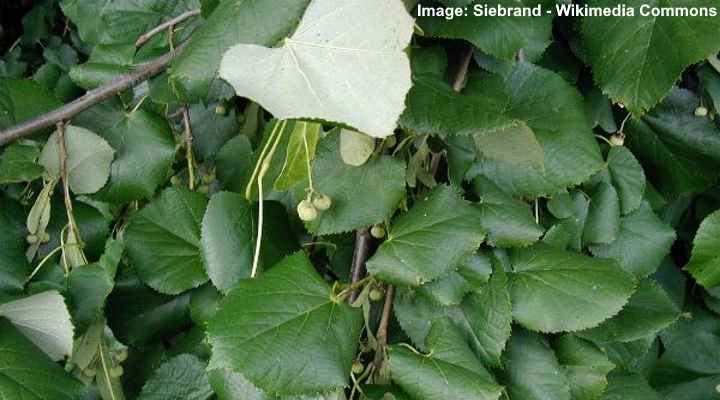
Silver linden leaves
Silver linden leaves: Identify silver linden leaves by the pointed, triangular-ovate leaves with a dark-green upper side and a silvery-white underside. There is also noticeable serration along the leaf edges.
Weeping Silver Linden (Tilia tomentosa ‘Petiolaris’)

Weeping silver linden tree (Tilia tomentosa ‘Petiolaris’)
The weeping silver linden has drooping branches, giving the tree the common name weeping silver linden. The outstanding growth features of the weeping silver linden are its silver-green leaves, dense foliage, and low canopy. Its tall stature and weeping growth give the tree an almost columnar look.
The weeping silver linden tree grows best in USDA zones 5 – 9. The linden tree thrives in full sun but is also tolerant of some shade. Also called the white-leaved lime tree, this weeping linden tree variety is among the most vigorous trees in the Tilia genus.
Weeping silver linden tree leaves: The linden tree’s leaves grow around 4” (11 cm) long and wide. The large pointed triangular leaves dangle on the end of 4- to 8-inch (11 – 20 cm) long petioles.
Henry’s Lime Tree (Tilia henryana)
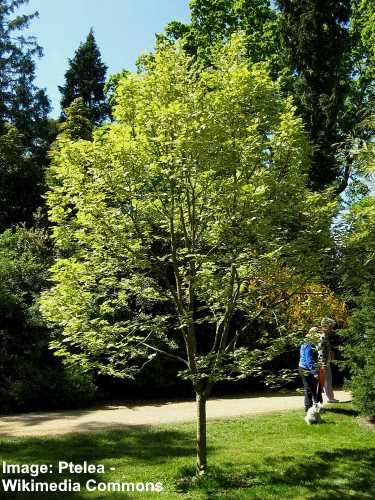
Henry’s lime tree (Tilia henryana)
The Henry’s lime tree is a slow-growing deciduous tree, with heart-shaped leaves and identifiable long teeth on the leaf margins. Flower clusters grow on the end of long, drooping cymes, and they bloom in early to midsummer. You can identify this linden by its rounded crown.
Compared to other species of linden trees, the Henry’s lime tree is a medium-sized tree. Thriving in USDA zones 6 – 9 and full sun, the tree matures between 20 and 30 ft. (6 – 9 m) tall.
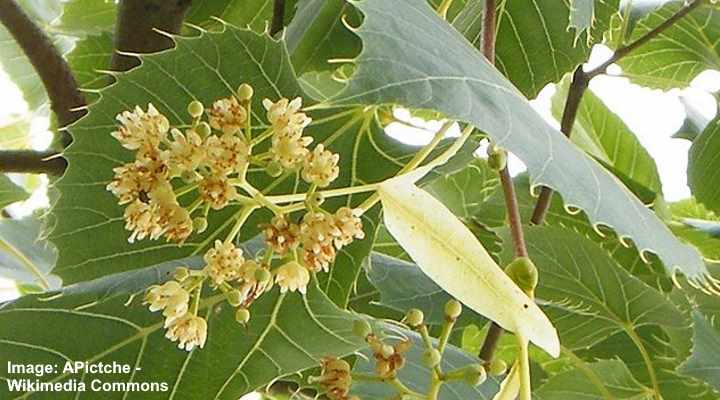
Henry’s lime flowers
Henry’s lime tree leaves: The linden tree’s leaves grow up to 5” (12 cm) long. The leaves are identifiable by the fringed edges with long curled teeth. You’ll also notice that the large leaves are sea-green with yellow veins.
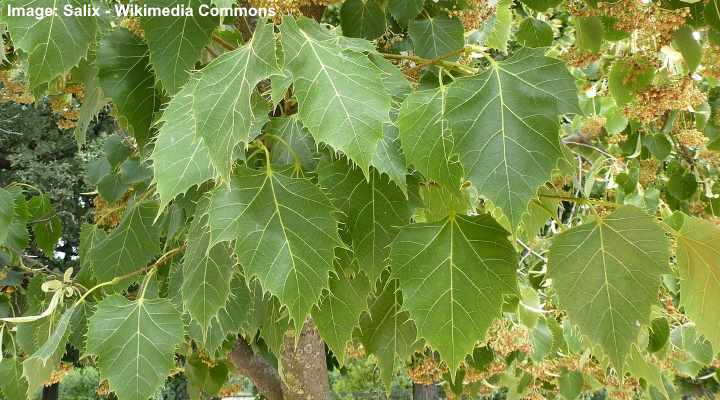
Henry’s lime tree leaves
Caucasian Linden Tree (Tilia x euchlora)
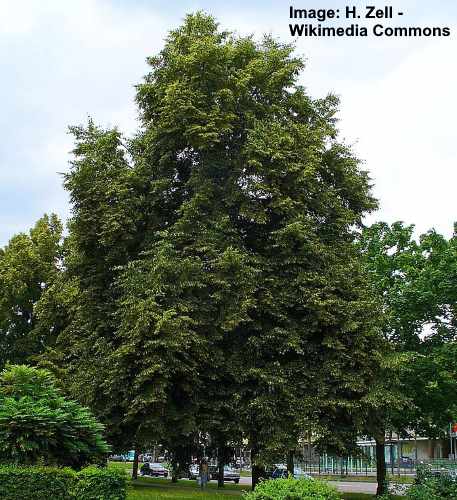
Caucasian linden tree (Tilia x euchlora)
The elegant Caucasian linden tree has rounded pyramidal growth and glossy green foliage. As the tree matures, its branches become more pendulous. As with all lindens, the Caucasian lime tree has clusters of furry-looking yellow flowers and triangular leaves with serrated edges.
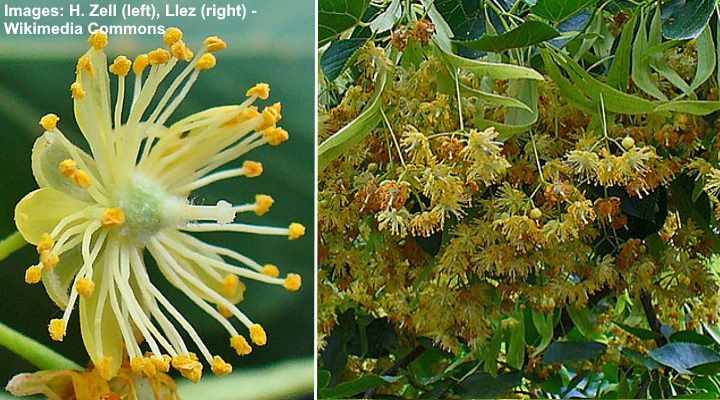
Caucasian Linden Tree (Tilia x euchlora) flowers
Also called the Crimean lime, this linden thrives in USDA zones 3 – 8 and grows between 40 and 60 ft. (12 – 18 m) tall and up to 30 ft. (9 m) wide.
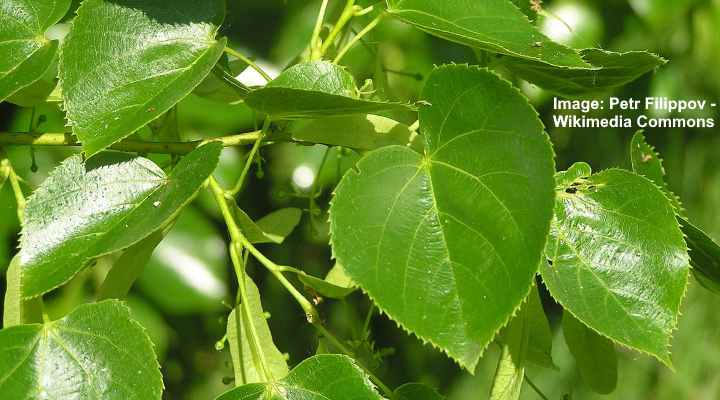
Caucasian linden leaves
Caucasian linden tree leaves: The linden tree’s leaves are glossy green with toothed edges. An identifying feature of the leaves is the pale underside that is slightly fuzzy when immature. Caucasian linden tree leaves grow up to 4” (10 cm) long.
Glenleven Linden (Tilia flavescens ‘Glenleven’)
The Glenleven linden tree is a beautiful small shade tree with a noticeable oval-pyramidal crown. The large heart-shaped leaves grow densely on the smooth gray branches. In the fall, the leaves turn an attractive bright golden yellow color before falling. The Glenleven linden grows up to 50 ft. (15 m) tall and 35 ft. (10 m) wide.
Related articles:
- Beech Trees: Types, Leaves, Bark — Identification Guide
- Poplar Trees: Types, Bark, Leaves – Identification
- Birch Trees: Types, Leaves, Bark – Identification
